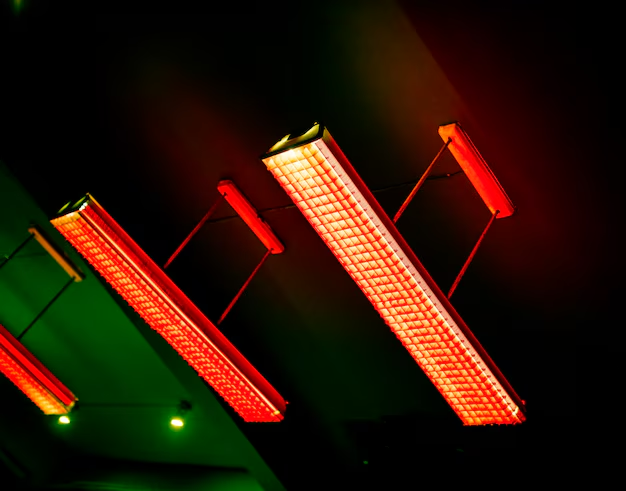Lighting Designs: Redoing Spaces in Style and Aesthetic
Lighting design plays an important role in enhancing the form, purpose, and atmosphere of a place. Residential or outdoor spaces and even commercial places depend on quality lighting to convert ordinary space to special space. Optimal lighting designs balance aesthetic with function to have spaces lighted adequately, but at the same time, a delightful looking space to the eye.
The Importance of Lighting Design
Lighting is not merely lighting; it's about the overall ambiance and functionality of a place. Well-distributed lighting illuminates things, highlights architectural features, and influences mood and perception. Conversely, bad lighting can make places look uninviting and even influence performance and overall wellness.
Types of Lighting in Design
Lighting design involves various types of lighting, each with a specific purpose. A good lighting plan mixes a number of layers of light in order to create depth and enhance the total effect of a room.
Ambient Lighting
1. Also known as general lighting, ambient lighting provides general illumination to a space. It supplies equal brightness and is needed for low visibility and comfort.
2. Common sources: Ceiling-mounted fixtures, chandeliers, recessed lighting, and floor lamps.
Task Lighting
1. Task lighting focuses on specific areas where activities such as reading, cooking, or working take place. Task lighting enhances functionality and reduces eye strain.
2. Common sources: Desk lamps, under-cabinet lighting, pendant lights, and track lighting.
Accent Lighting
>
1. Accent lighting emphasizes architectural features, artwork, or interior design features in a room. Accent lighting adds depth and visual interest.
2. Common sources: Wall sconces, picture lights, LED strip lighting, and spotlights.
Decorative Lighting
1. Decorative lighting becomes a point of emphasis and enhances the beauty of the space. These lights are designed to make a statement.
2. Needed sources: Chandeliers, pendant lighting, and innovative LED presentations.
Natural Lighting
1. Design incorporation of natural light is less energy-intensive and enhances mood and wellness. Proper placement of windows, skylights, and glass doors maximizes daylight usage.
2. Techniques: Reflective lighting surfaces, sheer curtains, and strategically positioned windows.
Key Principles of Effective Lighting Design
Arriving at an effective lighting design encompasses several principles that help select and position light fixtures. The principles render the light functional as well as visually pleasing.
Layering Light
Blending ambient, task, and accent light creates a rich and tolerant lighting scheme. Layering allows one to adjust the levels of brightness based on diverse tasks
.
Color Temperature and Mood
The color temperature of lighting sources influences the mood of a room. Warm light (2700K-3000K) creates a warm, cozy atmosphere, while cool light (4000K-6500K) enhances concentration and alertness.
Energy Efficiency
LED lighting and intelligent lighting controls optimize energy efficiency and reduce electricity costs. Dimmers and motion sensors also enhance energy savings.
Directional Lighting
Proprietary placement of light sources assists in uniform lighting and shadow or glare elimination. Adjustable fixtures allow for modification based on individual needs.
Aesthetic Harmony
Lighting fixtures must harmonize with the general décor theme. Modern, industrial, vintage, or minimalist lighting solutions must be compatible with the space theme.
Lighting Design for Different Spaces
Each space requires a unique lighting scheme to optimize its purpose and aesthetics. This is the manner in which lighting design varies in different spaces:
Residential Lighting
1. Living Rooms: Both ambient light (ceiling lamps), task light (floor lamps), and accent light (wall sconces) contribute comfort and attractiveness.
2. Kitchens: Task lights underneath countertops, pendant lights over islands, and recessed lights provide general lighting to make it a well-lit work station.
3. Bedrooms: Dimmable light and soft ambient light encourage relaxation.
4. Bathrooms: Warm-toned vanity lighting illuminates adequately for grooming tasks.
Commercial Lighting
1. Offices: Cool-toned light encourages productivity. Task lighting reduces eye strain in workstations, and ambient light provides even lighting.
2. Retail Stores: Accent lighting emphasizes products and fosters a welcoming shopping atmosphere. Adjustable track lighting allows flexible display arrangements.
3. Restaurants: Ambient lighting enhances the dining pleasure, while pendant lights over tables create a cozy ambiance.
Outdoor Lighting
1 .Pathway and Landscape Lighting: Low-voltage LED lighting illuminates paths and highlights garden features.
2. Security Lighting: Infrared motion-sensitive floodlights offer enhanced security and safety.
3 . Patio and Deck Lighting: String lights, lanterns, and wall fixtures create an intimate outdoor ambiance.
Smart Lighting Solutions
Technology has revolutionized the area of lighting design with intelligent lighting solutions that offer efficiency and convenience. They allow individuals to manage light and customize settings according to requirements.
1. Smart Bulbs: Wi-Fi-enabled LED bulbs can be controlled through mobile apps, so the user can change brightness as well as color temperature.
2. Voice-Activated Controls: They are connected to voice helpers like Alexa and Google Assistant for control of adjustments using hand-free functions.
3. Motion Sensors: Automatically turn lights on and off with movement, conserving energy.
4. Programmable Lighting: Timers and scene setting establish ambiance and convenience.
The Future of Lighting Design
Lighting design is changing with new trends that make the future more sustainable, efficient, and beautiful as technology progresses.
1. Human-Centric Lighting (HCL): Dynamic light intensity and color temperature to match natural circadian cycles improves sleep, mood, and productivity.
2. Sustainable Lighting: Solar-powered lighting, energy-efficient LEDs, and recyclable materials help achieve green lighting solutions.
3. Interactive Lighting: Intelligent systems that adapt to gestures, voice controls, and changing environments improve user experience.
Hire Professional Lighting Design Services on Fiverr
Achieving a well-designed lighting scheme requires expertise and creativity. If you’re looking to transform your space with professional lighting design, Fiverr offers a range of expert services tailored to your needs.
Why Select Fiverr for Lighting Design?
Professional Designers: Collaborate with experienced lighting designers who specialize in aesthetics, functionality, and technical knowledge.
Personalized Solutions: Obtain customized lighting plans that match your budget and style.
Reasonable Price:</span> Get access to services with different budgets without compromising on quality.
Fast Turnaround: Get professional designs in a matter of a short time to match your project deadline.
Services Offered:
·Residential and Commercial Lighting Design
·3D Lighting Visualization and Rendering
·Smart Lighting Consultation and Installation
·Outdoor and Landscape Lighting Plans
·Energy-Efficient Lighting Solutions
sunny
From home remodeling to business space installation, and even enhancing outdoor areas, professional lighting design can make a big difference in your property. Go to Fiverr today and find top-rated lighting designers to make your vision come true.




0 Comments:
Post a Comment
If you have any doubt, please let me know
Subscribe to Post Comments [Atom]
<< Home